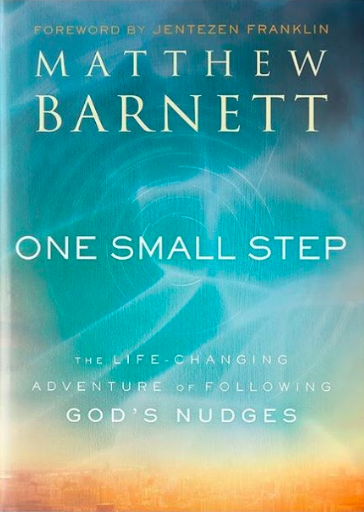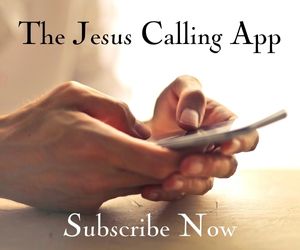When Dreams Are Far From Reach, Trust God’s Vision: Matthew Barnett & Richard Cowdrey
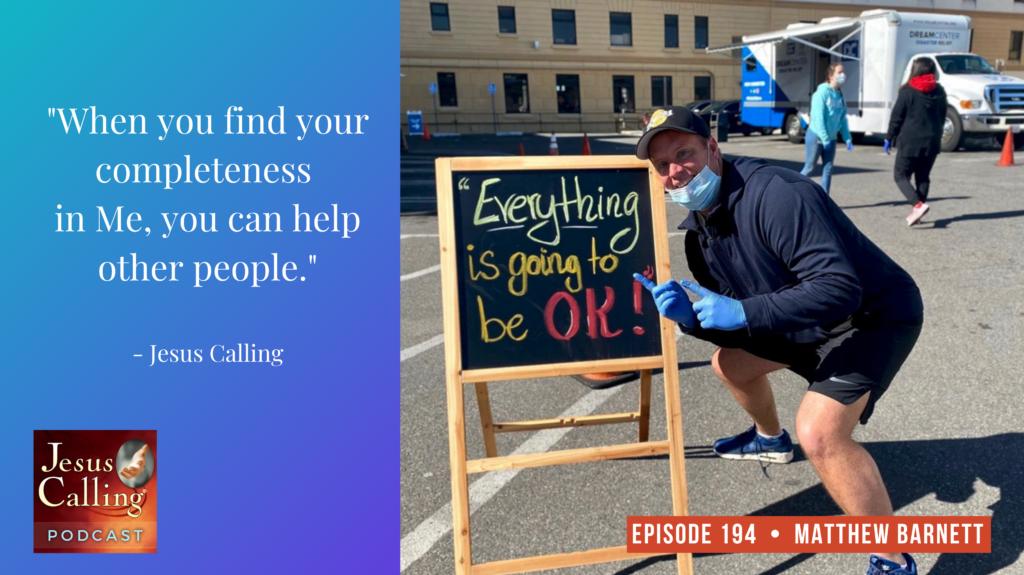
Narrator: Fill Easter baskets this year with the adorable children’s book Jesus Calling: The Story of Easter! You can find Jesus Calling: The Story of Easter on special at Books-A-Million.com.
Matthew Barnett: I would tell people who are dealing with a lot of that loneliness and isolation right now to just remember the reputation of God, to remember what He’s done before. Write down a list of all the things that you’ve been through in life, where you thought maybe that it was the end, or it was the era that was too much for you to handle. I did that the other day, and it really changed my life. I just gave myself a little history lesson on what God’s done before. And it gave me so much courage to believe that He could do it again.
When Dreams Are Far From Reach, Trust God’s Vision: Matthew Barnett & Richard Cowdrey – Episode #194
Narrator: Welcome to the Jesus Calling Podcast. Our guests this week demonstrate how God can take ordinary people and instill a dream within them to have a life of lasting impact: Pastor of the Los Angeles Dream Center Matthew Barnett and children’s book illustrator Richard Cowdrey.
As people all across the world retreat into their homes during this global pandemic, some people are on the front lines, serving and helping those in need. Matthew Barnett is the pastor of the Los Angeles Dream Center, a twenty-four hour facility that helps people who are homeless, going through drug or alcohol dependency, and many other needs. Matthew tells us how they are serving the LA area during this tough period where job losses run rampant, homeless people are at risk, and a large percentage of school children aren’t getting the meals that would normally be provided to them.
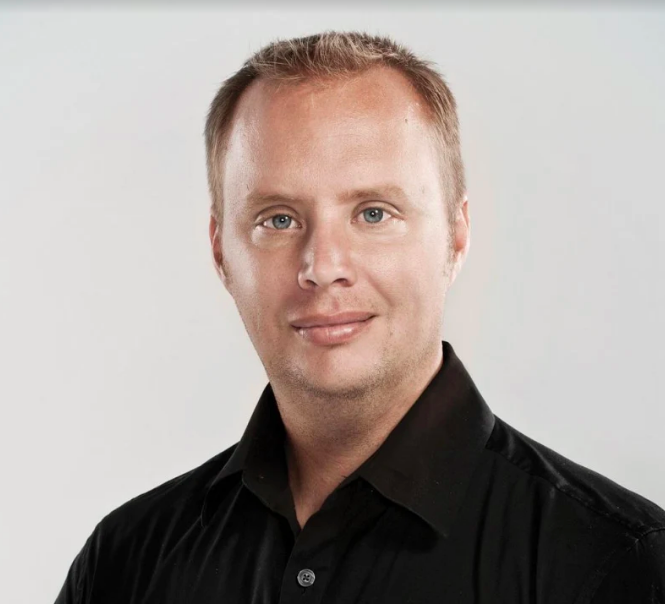
Matthew: My name is Matthew Barnett. I’m the pastor of the Los Angeles Dream Center. We are open twenty-four hours a day, helping people seven days a week who are homeless, going through drug and alcohol recovery, or in any type of need. We house 700 people every day who are homeless, families who are homeless people, people who have drug and alcohol addictions that we take in every second of the day, literally.
Calm the Fears and Meet the Needs
The Coronavirus epidemic has changed everything that we normally do.
It was a Thursday right before a church service, and it was just announced. I knew that immediately we needed to shut down service and not have a church service, and prepare for Monday because we knew what was coming next, and that was the public school system in L.A., which is the second largest in the nation—children [weren’t going to have] meals, families were going to be struggling, and there was going to be a major issue.
So I said, “Guys, [there are] two things we need to do right now: we need to calm people’s fears by not having church service and gathering thousands of people in our church building. And number two, we need to be ready to meet the need on Monday. Calm the fears and meet the need.” And I said, “We’re going to open up for eleven hours on Monday. We’re just gonna see what happens, and we’re going to feed people through a drive-thru so nobody’s worrying about big crowds or shoulder to shoulder contact or anything like that.”
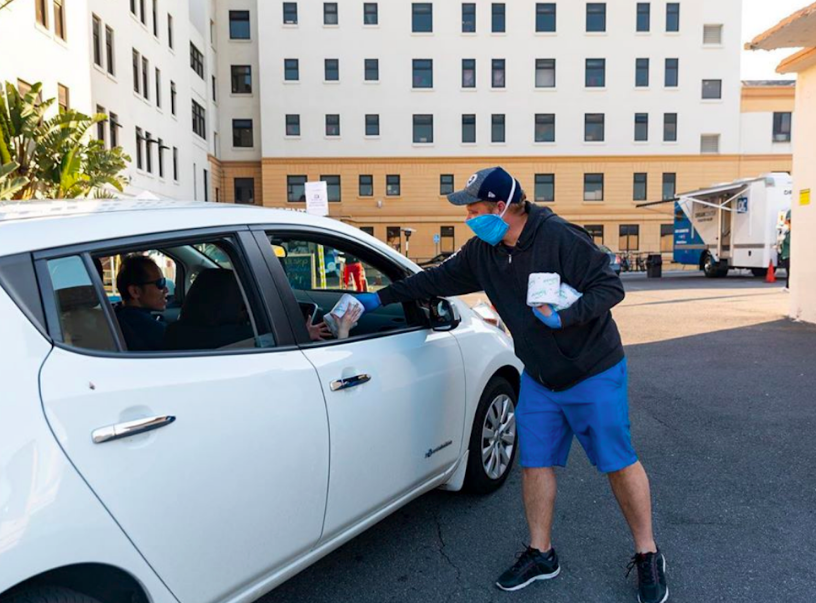
People are stopping by three times a day, for breakfast, lunch, and dinner. When they’re coming by, we have a thirty-second encounter, and we just try to provide the greatest thirty seconds of people’s lives. You know, we always hear that people changed in a moment, they’re changed in an instant. We’re really seeing that that could become a reality now, because when people are coming through, we are just loving on them, saying quick prayers, without toughing them, through the roof of their car or through the window. We’re providing a spark that keeps people going through the day.
“Just staying in the neighborhood, not leaving, and being there for people is one of the best things you could do at a time of crisis. [Let them] know that you’re not going to run, you’re not going to leave. You’re still going to be a steady force of change in the community.” – Matthew Barnett
The city of L.A. came alongside us and said, “You guys are one of the most essential places to stay open during this time.” The mayor and the councilmen were begging us to keep going, and so we just feel like we were born for such a time as this. We’ve been faithful in L.A. for twenty-five years, in this old hospital, and we’re still housing people during the virus, all of that, as the city brings us needs or people that aren’t sick that we could take in. But in the twenty-five years of feeding fifteen hundred hot meals every day, we really believe that we were born for this era that we’re facing right now.
“In the twenty-five years of feeding fifteen hundred hot meals every day, we really believe that we were born for this era that we’re facing right now.” – Matthew Barnett
Where the Dream Began
What led me to this place is, I was twenty years of age when I started pastoring. I was sitting in the backseat of a van [during] the earthquakes and the riots and all that took place in L.A. It wasn’t a time a lot of people were coming back into the city during the gang violence, and my dad was trying to find a church plant. We had ten people in a van to try to take over this little old building in a rough part of town. I was a twenty-year-old kid in the back seat, just helping my dad do whatever he needed to do.
And he just wept and he said, “Son, this church is gonna be sold, or we’re gonna lose a great pillar, an icon that had been there for eighty years in the neighborhood.” But really, the times changed, the demographic changed. And he said, “Something’s got to happen.” He said, “Would you help me come and pastor for three months?” And I wasn’t even a pastor. I had no experience. But he told me to come for three months. So I just moved my desk on the sidewalk, and had three bags of food, and started handing it out to people in the neighborhood. I lived with three homeless guys on the street that we took in. And that was the beginning, just a desk on the sidewalk, talking to all the moms of the neighborhood, and asking if we could serve them.
And of course, the first three months I struggled greatly. But then I took a prayer walk one night, and I really did hear the impression of the Holy Spirit. [He] spoke to me and said, “I want you to build a twenty-four-hour church in the middle of this city that will never sleep, that would be open for people all hours of the day.” And it became a revelation.

Then one day, we saw the miracle of this big old 410,000-square-foot hospital called the Queen of Angels Hospital. And to make a long story short, the Catholic Church was going to sell it for $16 million to Paramount Studios. But when we approached them and told them what our vision was, they sold to us for $3.9 million. And in eighteen months, miracles happened to allow us to pay for that 400,000-square-foot building on the Hollywood Freeway that’s open all hours of the day for people.
The People Served At The Dream Center
You know, L.A. is expensive. Everyone’s two weeks away from being evicted. It’s just constantly taking in families, homeless veterans, and these are the kind of people [we take in]. Every program that we build at the Dream Center is one year, and the reason why it’s one year is because we want to give people the luxury of time to change. When people don’t have time to change, they act in desperation, so we just try to take away that survival mindset and get them into a place where they can take a deep breath, so they can get into the word of God. They can start growing as people, and then they can start rebuilding their lives.
“Every program that we build at the Dream Center is one year, and the reason why it’s one year is because we want to give people the luxury of time to change.” – Matthew Barnett
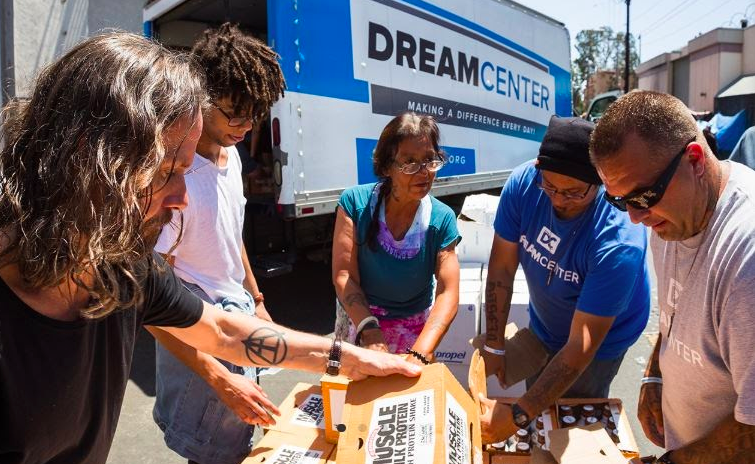
We have 275 men and women in our drug and alcohol rehab program, and we also take in thirty people a month that are sentenced to us, to the Dream Center, instead of a prison sentence. So we’re dealing with prison reform, and then homeless families. We’ve got about 220 people that are families who are homeless, who have nowhere to go. They show up in their cars, with precious little children. There’s someone to pray for them, to hold their hand through the process, helping them get to point A to point B in their journey. And so I think the thing that’s the strongest element is that time aspect to see God begin to evolve in their life.
You know, we’ve got such a great curriculum. Jesus Calling has been a part of our recovery programs. People come into the program in detox, and are learning how to communicate with God, learning how to hear the voice of God, learning how God speaks to people. And so we incorporate it into our recovery program.
What I love about it the most is it is revolutionary to the people who come in because most of the people who come in have no concept of the gospel. And so when they read something like that, you know, their minds are kind of blown by everything. [They say] “Oh my word,” like crazy. “Are you kidding me?” Like, the reaction is always like a little child that gets to go to Disneyland for the first time when they hear about this incredible relationship they can have with God, and the way God speaks to them.
Here’s a passage from January 5th of Jesus Calling:
YOU CAN ACHIEVE THE VICTORIOUS LIFE through living in deep dependence on Me. People usually associate victory with success: not falling or stumbling, not making mistakes. But those who are successful in their own strength tend to go their own way, forgetting about Me. It is through problems and failure, weakness and neediness, that you learn to rely on Me. True dependence is not simply asking Me to bless what you have decided to do. It is coming to Me with an open mind and heart, inviting Me to plant My desires within you. I may infuse within you a dream that seems far beyond your reach. You know that in yourself you cannot achieve such a goal. Thus begins your journey of profound reliance on Me. It is a faith-walk, taken one step at a time, leaning on Me as much as you need. This is not a path of continual success but of multiple failures. However, each failure is followed by a growth spurt, nourished by increased reliance on Me. Enjoy the blessedness of a victorious life through deepening your dependence on Me.
Focusing on What Matters
Matthew: You can stress over the many that don’t make it, and many do go back to their drug addiction. Not everyone succeeds who comes through our program. But I try to focus on the ones that do make it, and that’s what keeps me going.
In twenty-five years, you go through a series of emotions. You go through wanting to quit. You actually go through the scenarios of your exit strategy. I mean, you go through a lot in those moments. And usually, when I’m dealing with those moments, there’s usually a couple of things that cause me to get to that place. Number one, to be honest with you, as a pastor, there’s times I get away from the spiritual disciplines. And I know that sounds crazy and very vulnerable, but I get busy doing a lot of things and forget to encourage myself in the Lord and get great resources to help me. And I just kind of . . . I get tough in the flesh, but I get weak in the spirit. And that’s a big difference
There’s also times where burnout, to me, could be a lack of vision, where I just get to a place in my life where I say, “You know, God’s done something so great in twenty-five years. If it all ended tomorrow, it would’ve been a great run.” You know, it gets to a place where you kind of get settled in a level of success.
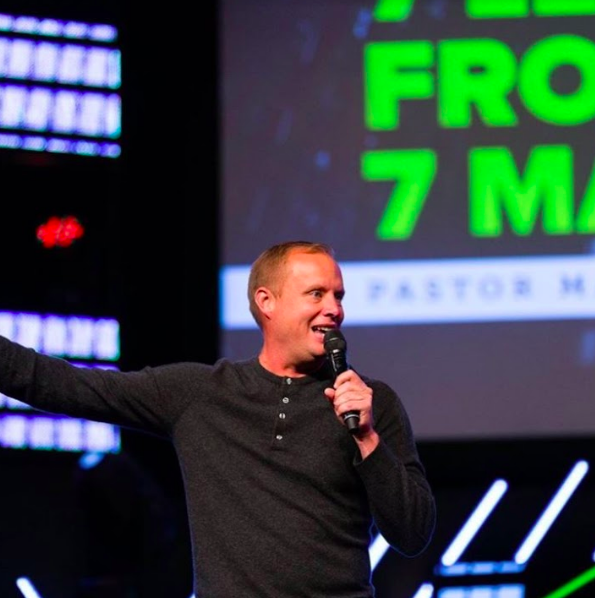
Those are the two big components, is either I’m not dreaming big enough in that season when I feel inspired by God, or number two, I just completely disconnect and get to the place where I just get cold spiritually, and yet I do all these things in the flesh. It’s quite a cycle in twenty-five years that you go on in the struggle and the journey of God, bringing you back to His heart. And [it’s] sometimes a wandering heart, and you get away from the most important thing. You’re doing the urgent, but you’re not responding to the important. You go through cycles for a long time of not being in the right place, and yet God is still blessing the work because He loves the people you’re trying to serve. And He’ll still use you anyways.
“You’re doing the urgent, but you’re not responding to the important.” – Matthew Barnett, on times we wander away from God
I’m laughing right now, because in my book, One Small Step, coming out April 7th, it’s quite interesting because we really lived out the evidence of that book. The book is about not being afraid to listen to those nudges of the Holy Spirit that tell you to do something that might be uncommon for what you’re capable of doing. It’s getting our heart to respond more to those everyday challenges and nudges of the Holy Spirit that speak to us in ways that are outside our comfort zone to help other people. And boy, has this really become evidence of that.
The book talks about so many times in life where we experience that. Even now, of course, we just said we’re going to open up this building on a Monday and help people. Now it’s turning into 75,000 people a week being served. But the whole book takes you on a journey of twenty-five years of just radical living and responding, whether it be saying something you’ve always felt but something in your heart tells you, “Don’t say it,” to all those little things and those nudges that start to set us free, where we step out and not become overwhelmed by fear when those moments speak.
The book just deals so much with the little things that we can do to make a big impact. I mean, from the isolation, from the everyday trips to the grocery store, it’s really made for this era, to be honest. I was writing and I realized I was writing it for such a time as this moment. It is so strange how God would use something to speak into the future. And it’s tough, because we’re doing all of this day to day work and trying to help as many people as possible. It’s truly extraordinary what’s happened, that we just kind of got started and believed that miracles would come along the way.
Narrator: To learn more about how to help others through the Dream Center, or to find a Dream Center near you, visit DreamCenter.org. And if you’re interested in reading more about Matthew’s journey, you can find his new book, One Small Step: The Life-Changing Adventure of Following God’s Nudges, everywhere books are sold.
Stay tuned to Richard Cowdrey’s story after a brief message about a beautiful new edition of Jesus Calling that will help prepare your heart for Easter.
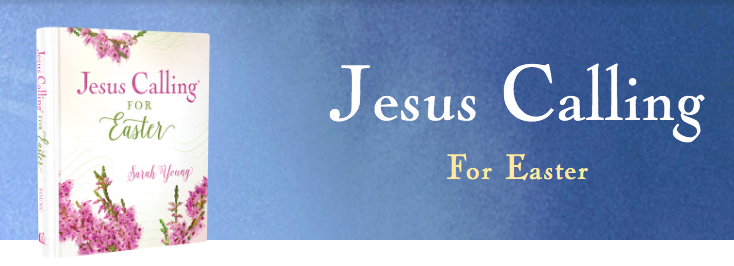
Narrator: The Easter season is filled with joy and hope. Now, there’s a new way to focus on the holiday with the new book, Jesus Calling® for Easter. With 50 Jesus Calling devotions selected just for the Lent and Easter season, Jesus Calling for Easter includes Scripture verses alongside breathtaking imagery and exquisite design. Jesus Calling for Easter makes a stunning gift for those who love Jesus Calling and would like a new way to observe the Easter season. To learn more about this beautiful new edition of Jesus Calling, please visit jesuscalling.com/books.
Narrator: From the time he was a young boy, Richard Cowdrey always had a crayon, a pencil, or a pen in hand—anything to help him create the vivid drawings he still brings to life today as the illustrator of adorable children’s books’ characters like Marley the Dog from Marley and Me and social media sensation Fiona the Hippo. But growing up, Richard never dreamed of success for himself. By the time he reached high school, he was jaded and without direction. But thanks to two teachers who believed in him, Richard found a new path that would spark a dream that had always been inside him.
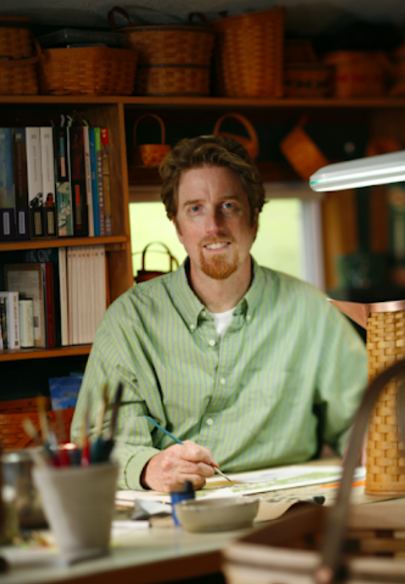
Richard Cowdrey: I’m Richard Cowdrey from Gambier, Ohio, and I’m the illustrator of the Fiona books.
I’m originally from Cincinnati, Ohio. Fortunately, the house I grew up in backed up to woods that went all the way to the Ohio River, so I spent a lot of my youth in the woods, just climbing trees and catching salamanders and all kinds of stuff like that. And looking back, that was important to who I am in my career, in that I have a real love for nature, and have always enjoyed being in nature, and currently live out in the country in Ohio now, out in Amish country. That’s been something consistent through my life.
The Grace of Others Who Believe in Us
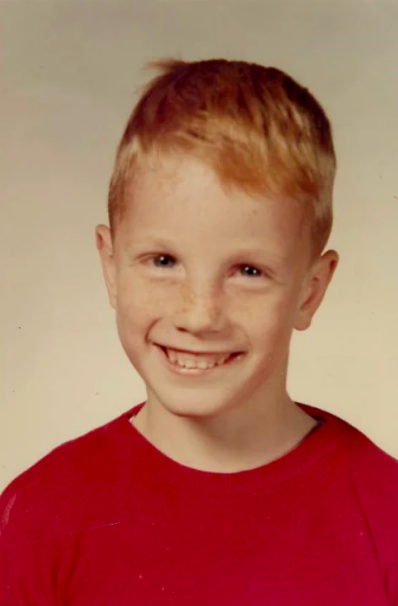
I can’t remember a time when I didn’t have a crayon or a pencil or a marker in my hand. And my mother—I’ve asked her—she says, “Yeah, I can’t remember you not drawing.” So it’s always been there. When I went off to school, I was recognized immediately for that. It has always been kind of my identity.
Strangely enough, I wasn’t a very good student, and it would be hard to find me in a library for any other reason than that I loved medical books. I loved the Gray’s Anatomy books, and would go in and look at those. They were big, illustrated anatomy books, and they had all the bones and muscles and organs and all the different parts in the body. [They were] just amazing paintings.
I spent a lot of time on my own, a lot of time drawing and just doing my own thing, which later on got me into a lot of trouble. But as a young kid, I was very inquisitive, and I did not fit the traditional learning style of schools. Back then, they thought that was a discipline problem, that I was being rebellious or something to sit and draw. I don’t know why they kept passing me on and on, because I was like a strong D student—you know, D-minus, really.
So I got to high school, and my parents were divorced at that point, so I had no discipline and really no guidance, or anybody watching out for me. I ended up hanging out with the wrong crowd, and becoming involved in a lot of bad stuff, a lot of partying and hanging out pretty much with the wrong crowd.
I had an art teacher that was a much older man, so to me, he wasn’t very relatable. So I’m flunking art, the thing that I excelled at. And what I would do is in my science or English or whatever class, if it was test day, I’d zip through and answer the most obvious questions that I knew, enough to pass, and I’d flip the test over and draw very elaborate, detailed drawings. And my friends, the other classmates, knew that I could draw very well, so they would hand me their notebooks or jackets or whatever and ask me, “Hey, can you draw Farrah Fawcett?” [This was] back in the seventies. Mr. Koenig became aware of that.
On his own accord, he went around and gathered up as many of those drawings and notebooks and tests that he could find, and he made a little portfolio for me, and he drove from Cincinnati, Ohio, up to Columbus College of Art and Design. He went to admissions, and he put my drawings in front of them, and he said, “I have a kid who’s got a lot of talent, but he’s a lot of trouble.” I was a lot of trouble at that point. You have to imagine that I had long red hair and was a pretty wild kid. I’m seventeen years old, I’m partying heavily, and that was pretty much the center of my life, looking for the next party. I hadn’t even considered college.
I didn’t know about Mr. Koenig making that trip until my graduation night, and my name was read off: “Richard Cowdrey, Scholarship, Columbus College of Art and Design.” That’s when me and my family found out about the scholarship.
Trusting God with Where You’re Going
So in college, as I think most college age kids [do], you start to ask the questions. “What is life about? Why am I here? Where am I going?” For me, “Where did that talent come from?” The people I hung out with [and I] would have discussions about philosophy and spirituality. And, in fact, we all checked into the eastern religions.
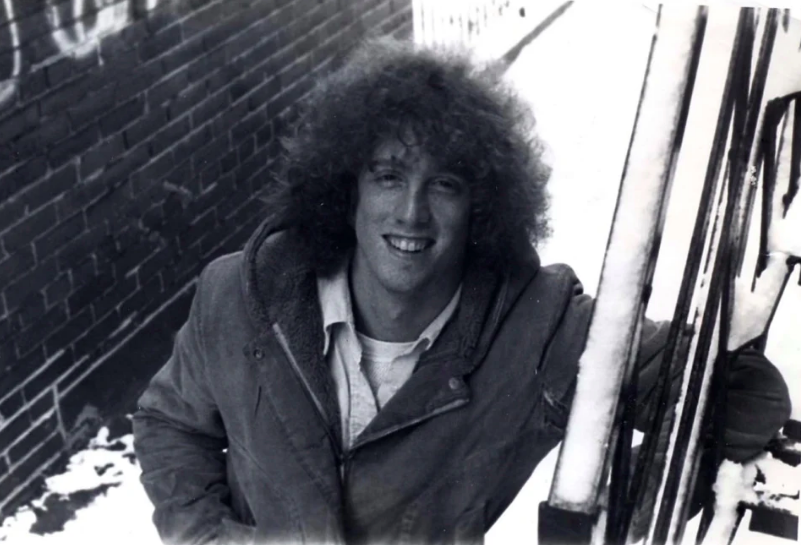
So by the end of the fourth year, I was pretty jaded about school and life and everything, and had partied a lot and tried just about everything the world has to offer. To me, it was just four years, five years of college, I’d get out, I’ll work forty years, and die. That’s really what it came to. I mean, it was a little melancholy, but I’m an artist! And so my senior year in college, I had an instructor, his name was Mr. Drummond. Everybody wanted to be in his class, so when you went to register, his classes would be filled immediately. The first four years—it was a five year college—I did not get into any of his classes.
Finally, in fifth year, I get Mr. Drummond’s class. I got to sit in his anatomy drawing class. We’re sitting there drawing halfway through class, he’s in the back, and I just hear, “Cowdrey! In the hall!”
I went out in the hallway with him, and he said, “Sit down.” And I sat down.
He said, “I’ve watched you for four years. I’ve watched you try everything you said. When are you going to try Jesus?” And really didn’t have much of an answer.
He pulled out his Bible. It was very worn. He opened it, and he had it clipped to the Gospel of John. And he said, “I would just ask that you read the section. This is called the Gospel of John. John was a buddy to Jesus, and he wrote about Jesus and His life. I just challenge you to read that. Just read it, and pray if you feel inspired. And bring me my Bible back.”
And then after class, I went back to my apartment, and pushed the beer cans aside, and sat and started reading the Gospel of John. And by the end of it—I was twenty-one, and I’m sixty now, so forty years ago—I still cannot actually come up with the words to describe what happened. I knew the answers. I knew who I was, why I was. I knew what was ahead. I knew what was behind my family, everything. I was just like, Wow. And, you know, excited isn’t even the right word. I didn’t know what to do with that excitement.
“I still cannot actually come up with the words to describe what happened. I knew the answers. I knew who I was, why I was.” – Richard Cowdrey, on reading the Gospel of John in college
In the other religions, it came back to me [and what I had done], whereas I’d read about God atoning for my sin. It was already done, all I had to do was trust, believe and trust, and give all that gunk over to Him. He would take care of it. [I didn’t need] to worry about that. He has it, and that alone was enough.
Thanking Our Heroes
Have you ever seen Mr. Holland’s Opus? He’s a high school teacher. He gets to the end of his career and feels like, What was that about? And all these students come back and celebrate his life, and answer his, What was that about? They come back and tell him, “I’m in a symphony,” “I’m this and that,” you know, all these people who witnessed the part that he played in their lives.
Twelve years later, my wife and I went to that movie on a Friday night, and I’m sitting there watching, and the Holy Spirit is all over me, going, “You never said thank you to Mr. Koenig.”
And the next morning, I called Cincinnati information and said, “Is there a Lewis Koenig alive still?” Because he was old when I had him. I called, and it was an old man’s voice. And I said, “Were you an art teacher at Oak Hills High School?”
And he said, “Yes, I was.”
And I said, “I don’t know if you remember me, Rick Cowdrey.” I was Rick back then.
And before I could get anything else out, he said, “Oh, yeah, tall, red hair. You went to CCAD.”
I said, “Yes, and I’m married, I have four kids, I’m an illustrator. I’m in art. But most importantly, I was introduced to Christ at school, so I’m a Christian. I’ve got this wonderful family and a wonderful career. None of it would have happened without you. I owe you everything.” And I don’t think I even said, “Thank you.”
And he was very touched, and we ended up having a really great relationship. You know, I saw the teachers as adversaries but the teachers love you, and they’re here for you.
Nature’s Influence on Art and Devotions

I have a real love for nature, and I think part of my testimony would be I could look at a tree and almost be emotional, just looking at the detail and the beauty of it. And so I was, I think, at a young age, even aware that there must be a God to create the animals and the woods. All of nature is beautiful, beautiful to me, always has been. And that’s still where I go when I need a break. Even though I live in the country, my wife and I like to go to the parks and we enjoy that very much.
“I have a real love for nature . . . even at a young age, I was aware there must be a God who created the animals and the woods.” – Richard Cowdrey
I have my quiet time, where I’m just trying to read the Word. But my wife is very much into devotionals, and she has been reading Jesus Calling for a while. This morning, I asked her, “What would you say about it?” And she said that it is just so personal, and has made Christ involved in the small details of her life. Just knowing that He cares about supper—if it’s something that is touching her or other people, it can be the smallest details that that book has really opened her eyes to the intimacy of Christ in our lives.
[This passage is from] July 30th.
Worship Me in the beauty of holiness. I created beauty to declare the existence of My holy Being. A magnificent rose, a hauntingly glorious sunset, oceanic splendor—all these things were meant to proclaim My Presence in the world. Most people rush past these proclamations without giving them a second thought. How precious are My children who are awed by nature’s beauty; this opens them up to My holy Presence. Even before you knew Me personally, you responded to My creation with wonder. This is a gift, and it carries responsibility with it. Declare My glorious Being to the world. The whole earth is full of my radiant beauty—My Glory!
Bringing Fiona the Hippo to the Page

I was an illustrator mainly with companies and design studios and stuff, doing individual pieces. I got to do the Super Bowl artwork one year, which was very cool. You know, so I’m a happy illustrator, and I get a call from HarperCollins. I was one of three artists they were considering for the children’s version of Marley and Me. And I said, “Who’s Marley and Me?” So they sent me a book, and I started reading it next to my yellow lab, and I’m like, “Oh, I have to do this book.” So I got to illustrate Marley, Bad Dog, Marley, and it went to number one on the New York Times bestseller list. So suddenly, my career, which was going this way with individual corporate stuff, now you’re a children’s book illustrator.
Ten years later, my wife starts telling me about this little hippo born at the Cincinnati Zoo, born prematurely. They didn’t expect her to live, and they called in nurses from Children’s Hospital who helped put an I.V. in her arm and stuff and were nurturing her to life. You know, it was just a very compelling story. And every night I’d get home from my studio and I’d say, “What’s Fiona doing today? How’s she doing?” Cindy would tell me and show me Facebook stuff about Fiona. She had fans all over the world who had been watching and praying for her and sending love notes and stuff to the zoo. And it just dawned on me that she would make a great children’s book character.
I called the zoo, not thinking that I could get through, you know, because who uses the phone anymore? But they put me through to the right guy. I told him, “Hey, I’m the Marley guy,” which was my pass to get into a lot of art director’s rooms. And I said, “You know, I’ve done this before, taken a real character and made them into a children’s book character.” And I said, “I think you have a very compelling story with Fiona, and she would make a great children’s book character.” And he said, “Yeah, she would.”
Well, the first book, Fiona the Hippo, stayed fairly close to her story at the beginning, talking about her being born, this tiny little hippo. And then by the end of the first book, she’s made friends with all the other zoo animals. It’s just a very sweet story, and it’s a great introduction to her.
The second book was a Christmas book, and we were invited on all the TV networks in Cincinnati. We could tell that there was a real love for her, and love for the book. And so I don’t know when, but the decision was made for a third book, Fiona, It’s Bedtime.

It’s a bedtime story. And where she is the central character through the first two books, almost every page has Fiona in the middle doing something. This book, she’s in the background. She’s telling all the zoo animals good night, the cheetah and the polar bear and sloth and the meerkat, they’re all the stars of the story. Fiona, is just kind of going through saying, “Good night, everybody.” It’s a beautiful book.
I started getting calls from schools asking me to come speak. I hate standing up in front of people, so I prayed and just offered it up to the Lord, and said, “If you really want me to do this, I’ll do it. But I really don’t want to do it.” He made it pretty clear that I was supposed to.
So I take the attitude of my wife, and I pray before each school visit. I know it’s not about me, so I’m looking out at all these students, and I’m looking for the ones that look like me, who weren’t the straight-A students, who weren’t the quarterback, who weren’t the star students. They’re the ones on the edges, on the fringe. I try to encourage them that they have a gift, and I tried to speak to them and give them hope that I know God gives a gift to everyone. I honestly believe every person has something.
“I’m looking for the ones that look like me, who weren’t the straight-A students, who weren’t the quarterback, who weren’t the star students. They’re the ones on the edges, on the fringe. I try to encourage them that they have a gift.” Richard Cowdrey, on speaking in schools
Narrator: You can find Richard’s new book, Fiona, It’s Bedtime, wherever books are sold.
If you’d like to hear more stories about allowing God to shape our dreams and desires, check out our interview with actress & producer Rita Wilson.
Narrator: Next time on the Jesus Calling Podcast, we speak with author and Food Network star Melissa D’Arabian. Throughout her life, Melissa’s seen that sharing a table with others does more than just feed our bodies—God can use the table as a place where He can use others to fill our souls.
Melissa D’Arabian: That was the beauty of what Jesus did, and His compassion with food. It wasn’t just the big miracles and the feeding of the masses. Jesus shared a table with the marginalized and shared lives with them.
Narrator: Do you love hearing these stories of faith weekly from people like you whose lives have been changed by a closer walk with God? Then be sure to subscribe to the Jesus Calling: Stories of Faith Podcast on Apple Podcasts, Stitcher, or wherever you listen to your podcasts. If you like what you’re hearing, leave us a review so that we can reach others with these inspirational stories. And, you can also see these interviews on video as part of our original web series with a new interview premiering every other Sunday on Facebook Live. Find previously broadcasted interviews on our Youtube channel, on IGTV, or on jesuscalling.com/media/video.
